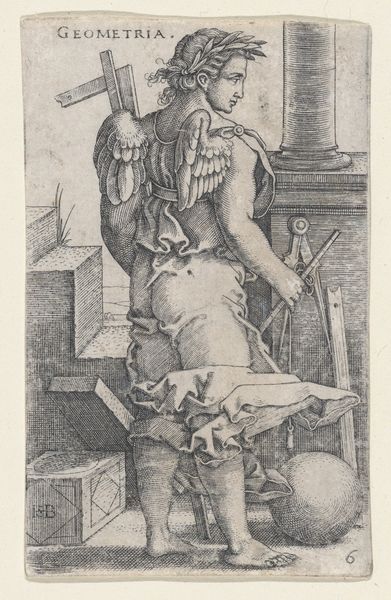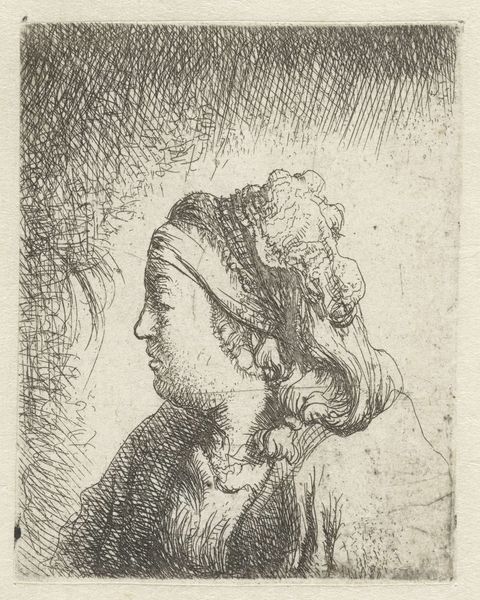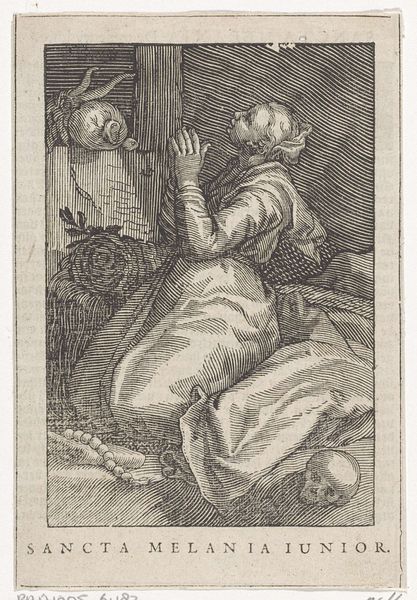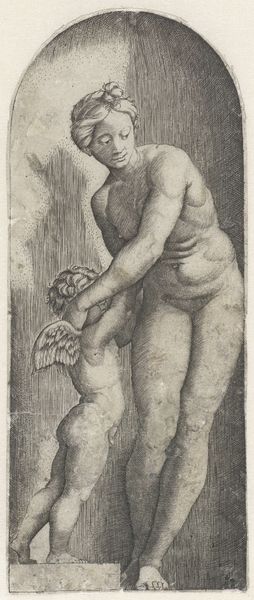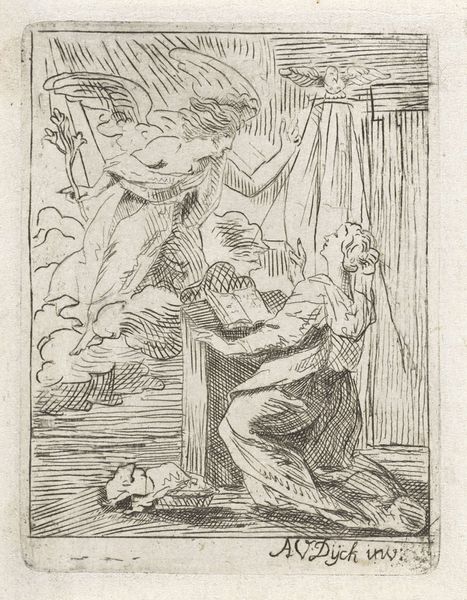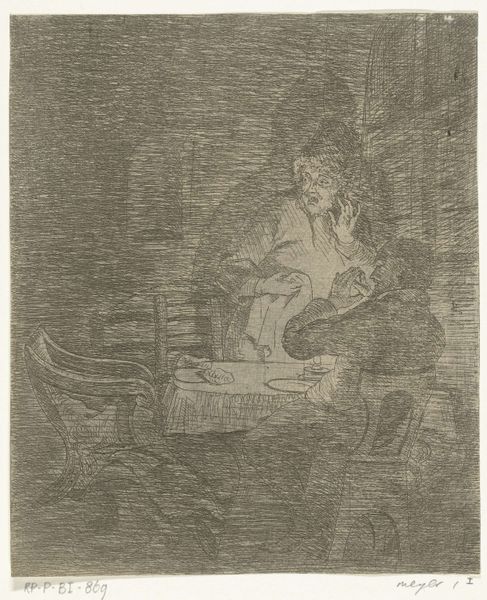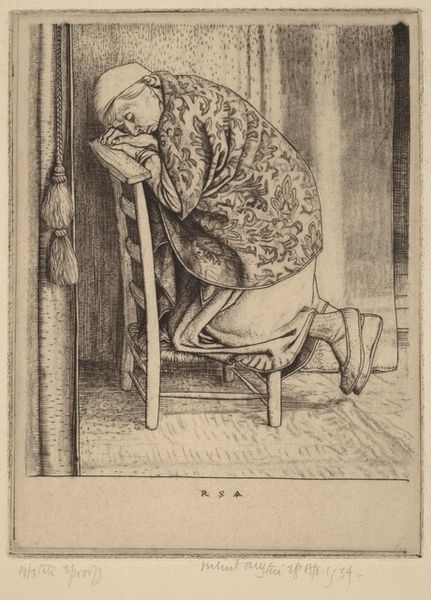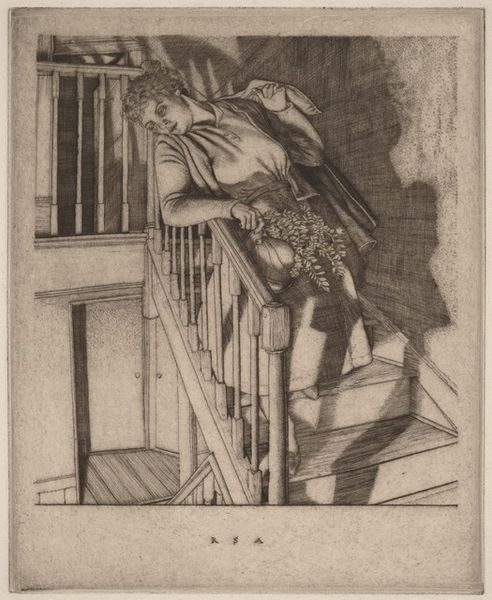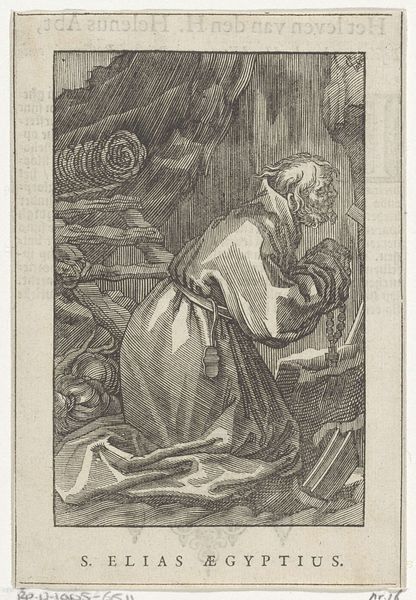
intaglio, engraving
#
baroque
#
intaglio
#
old engraving style
#
figuration
#
history-painting
#
engraving
Dimensions: height 153 mm, width 102 mm
Copyright: Rijks Museum: Open Domain
Curator: This engraving, "Heilige Thecla als kluizenares," or "Saint Thecla as a Recluse," by Christoffel van Sichem the Younger, dates back to 1644 and is part of the Rijksmuseum collection. Editor: Immediately, I’m struck by how withdrawn Thecla appears. The dense cross-hatching creates a claustrophobic feeling, emphasizing her isolation and…almost despair. Curator: Indeed. Van Sichem really captures the Baroque aesthetic here. Notice the dramatic light and shadow, the swirling lines—they all contribute to that sense of intense emotion. Thecla was an early Christian saint, a follower of Paul the Apostle. She renounced marriage and chose a life of asceticism. Editor: I see. So, all those symbolic objects around her... the skull, the crucifix, the rosary… these speak to her spiritual devotion, right? But they also hint at a rejection of earthly pleasures, a focus on mortality. Is she regretting something, maybe? Curator: Perhaps, or maybe reflecting the cost of commitment. The depiction emphasizes not just devotion but also the stark realities of such a choice within the visual and social language available in the 17th century. We must remember the socio-political context surrounding art’s function as religious affirmation during this time. Editor: That’s a fair point. Seeing these emblems—meant to inspire piety— now feels almost melancholy. There's a fragility that comes through, even within that highly stylized Baroque framework. A sense of longing, maybe for something she's sacrificed. The folds of her dress also feel somewhat confining; I can feel that restrictive feeling. Curator: Van Sichem has rendered Thecla not just as a saintly figure, but as a woman grappling with complex spiritual and emotional terrain. The engraving becomes a lens through which to consider choices and sacrifices. Editor: So true, it moves beyond simply venerating a religious icon, and encourages contemplating devotion as both transformative and inherently costly, making the artwork incredibly layered. Curator: Agreed. Van Sichem successfully invites us to reflect on that transformative cost, but from our contemporary vantage, perhaps even appreciate the fortitude in such sacrifice.
Comments
No comments
Be the first to comment and join the conversation on the ultimate creative platform.
